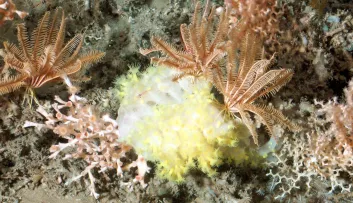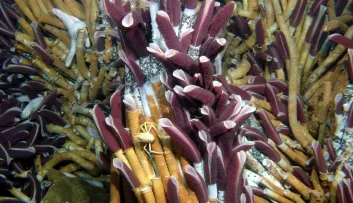Abyss Video 5mn
Life in the depths: how do creatures in the abyss adapt to extreme living conditions?
What are the physical characteristics that allow them to survive in the depths of the ocean?
Humans have always been fascinated by what happens beneath the surface of the oceans. And the idea of descending into this unfathomable abyss is even more exciting.
The imagination of our poets and authors has created a fantastic world inhabited by terrifying and spectacular creatures, with bold adventurers journeying to the bottom of the sea to experience a hostile and mysterious world. Remember ‘Twenty thousand leagues under the sea’, the legendary kraken or the film The Abyss, directed by James Cameron?
Today, this ‘unfathomable abyss’ is beginning to reveal its secrets and our exploration of the deepest oceans is disproving the assumption that extreme living conditions prevent the development of animal life.
Each oceanographic campaign leads to the discovery of new species and some are so strange and frightening they seem to confirm those fantastic tales with their extraordinary creatures.
But are these animals just frightening or have they simply adapted to their environment?
Razor-sharp teeth, a soft jaw or a distensible stomach - because we all have to eat!
“I’m not ugly; I have adapted to my environment!”. This might well be the claim of the creatures of the depths, whose characteristics may appear bizarre but are vital for surviving at the bottom of the ocean.
Food is rare in the depths of the ocean and it's essential to catch prey when it appears and ensure a good meal!
Sharp techniques
So, the anglerfish also has razor-sharp teeth at the back of its mouth to ensure any prey is gripped tightly and unable to escape. The common fangtooth has teeth totally out of proportion to its size (it measures a maximum of 16 cm) and the adult fish have two slots on either side of the skull to store the large fangs protruding from the lower jaw. The teeth of the viperfish are so large it cannot even close its mouth!
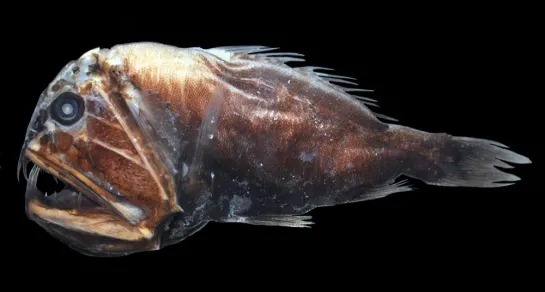
Black seadevils have transparent teeth, which are invisible when they open their black mouth. The prey, attracted by a bioluminescent ‘fishing rod’, end up in the black seadevil’s mouth. Another special feature is the soft jaw, which allows the fish to swallow even large prey.
The pelican eel, which lives at between 500 and 7,600 m down, uses a similar trick. The eel’s tail has a bioluminescent light and its mouth, which represents a quarter of its size, has a pocket which it uses as a net. And this explains its name!
The black swallower, Chiasmodon niger, also deserves its name. Its distensible stomach allows it to swallow prey twice its size and ten times its mass - it is only 25 cm long!
Is that you? Transparency and bioluminescence in the depths!
To disappear or to be seen?
In the depths, where darkness reigns, disappearing and being seen are two challenges which the creatures of the abyss have to overcome.
In the deepest zones of the sea, 90% of the creatures are bioluminescent! Because being seen is a necessity when it comes to being found and being able to reproduce.
Bioluminescence is also a trick used by some species to attract their prey. The anglerfish waves a luminous lure to catch a meal.
Some creatures, like the squid, use light to go invisible and escape from a dazzled predator. You can't be caught if you can't be seen!
Others, like the splitfin flashlight fish, emit luminous flashes to communicate with their fellows.
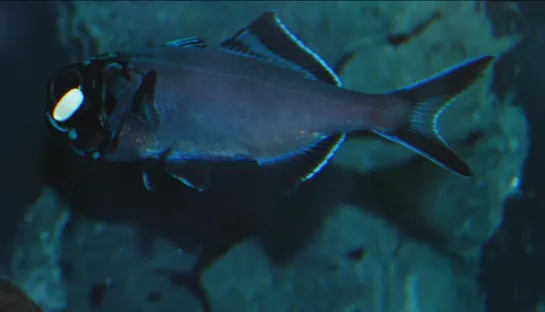
A life under pressure
A soft body to withstand the pressure
As you go deeper into the ocean, the pressure increases by a bar every 10 metres. This makes human exploration of these depths particularly difficult. So, how do the deep-sea creatures survive this pressure?
With a totally soft body! The limp or gelatinous bodies of these fish can withstand this great pressure by compressing. This adaptation cannot stand up to being brought to the surface, where the pressure is much weaker.
This is the case of the ‘blobfish’, known as the world's ugliest fish. When it is brought to the surface, its body loses its shape and becomes gelatinous - totally unrecognisable from its appearance in the natural environment.
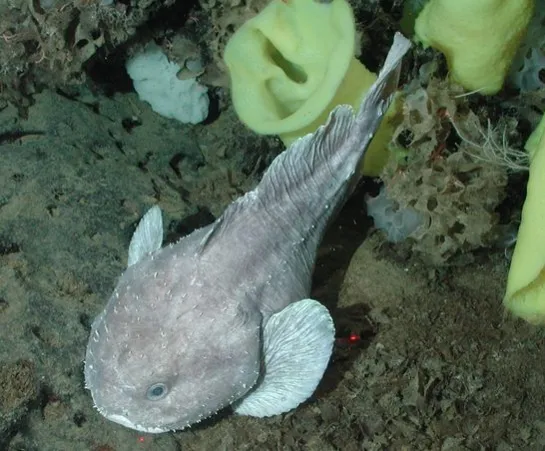
Huge or tiny: the abyss is a world of extremes!
Abyssal gigantism is a survival strategy for some species in these extreme living conditions. The low temperatures, scarcity of food and lack of light have led to the development of creatures in the depths that are much larger than similar species living in shallower waters.
Slower metabolism and sexual maturity, together with a long lifespan, help these creatures to survive. Their large size also protects them from predators.
Some of the large species include the giant isopod; the Japanese spider crab - the largest crab in the world; or the giant oarfish, which can reach up to 12 m in length; not to forget the giant squid, Architeuthis dux,or the colossal squid, Mesonychoteuthis hamiltoni, which measures between 13 and 14 m in length.
But it's not always size that counts. Some species with terrifying names are tiny: the common fangtooth is only 16 cm long, the vampire squid grows to a maximum of 30 cm and the female anglerfish is never longer than 20 cm, while the male is just 3 cm long!
Small or large, the creatures of the abyss, in their fascinating world, still have much to teach us about life and nature!

